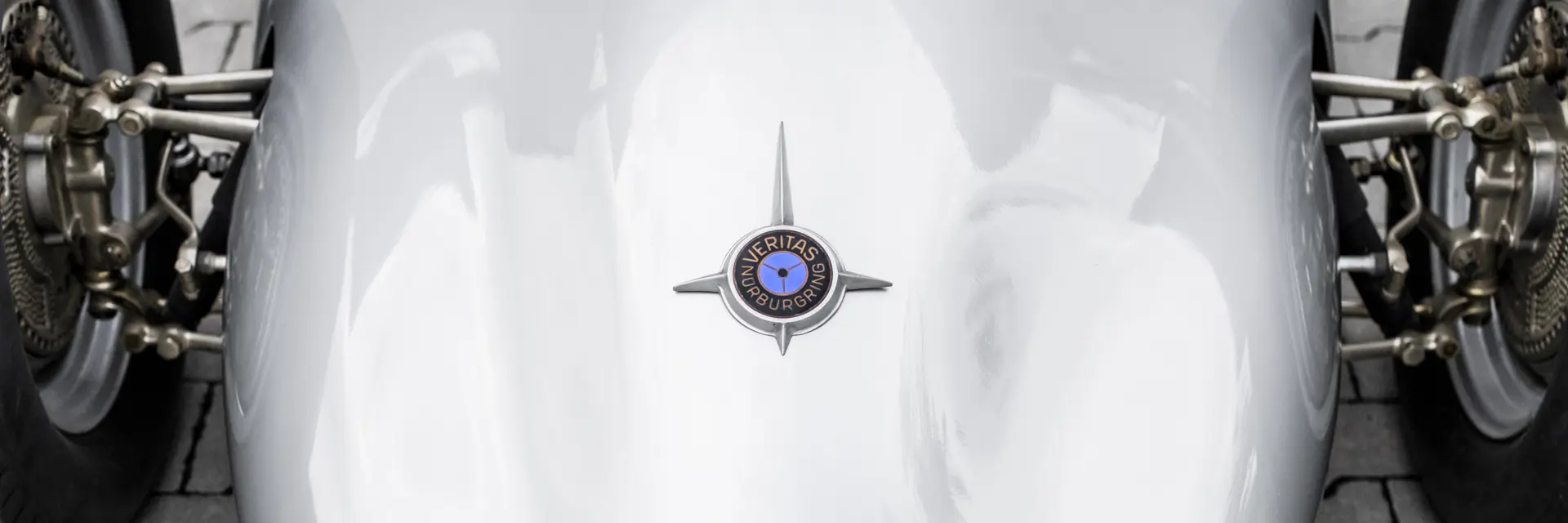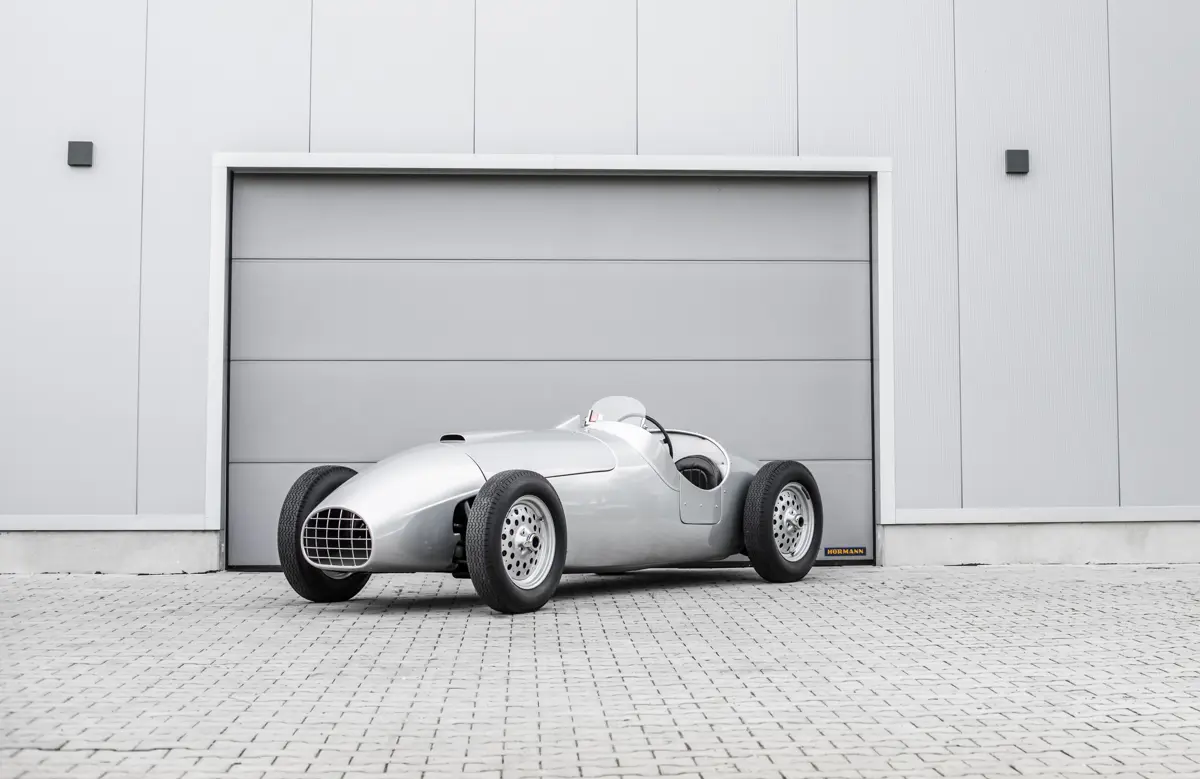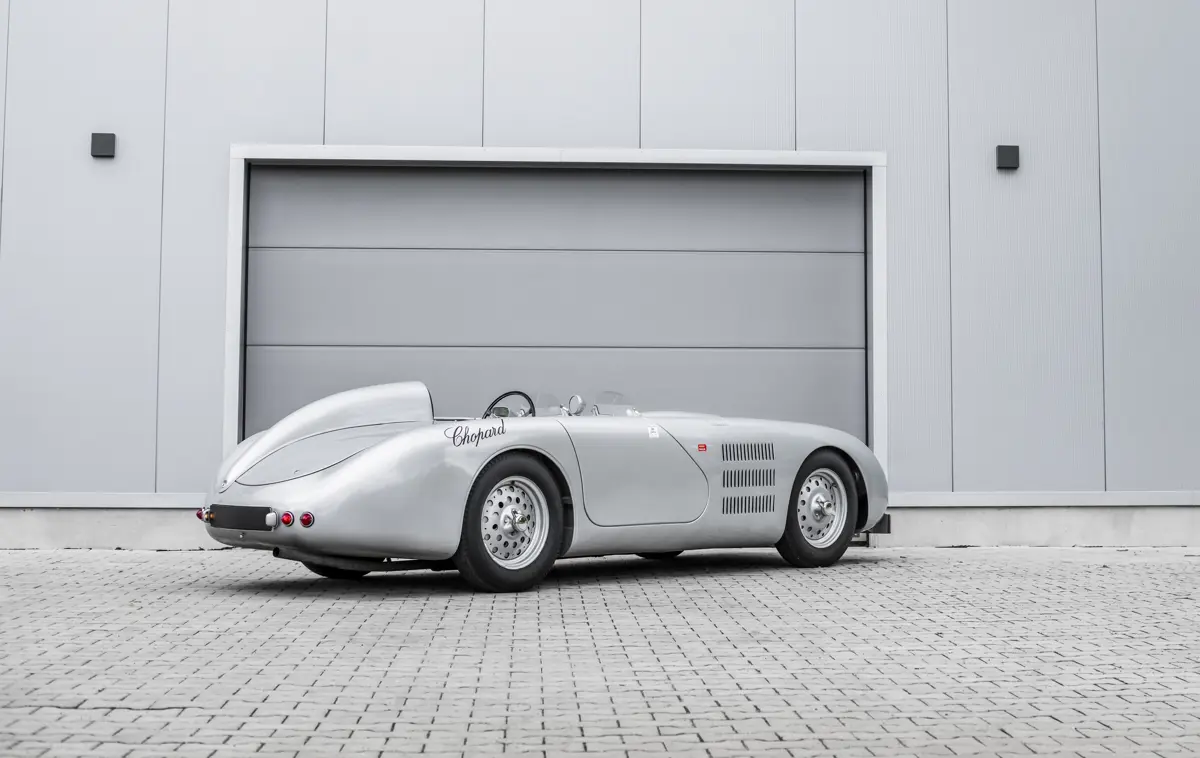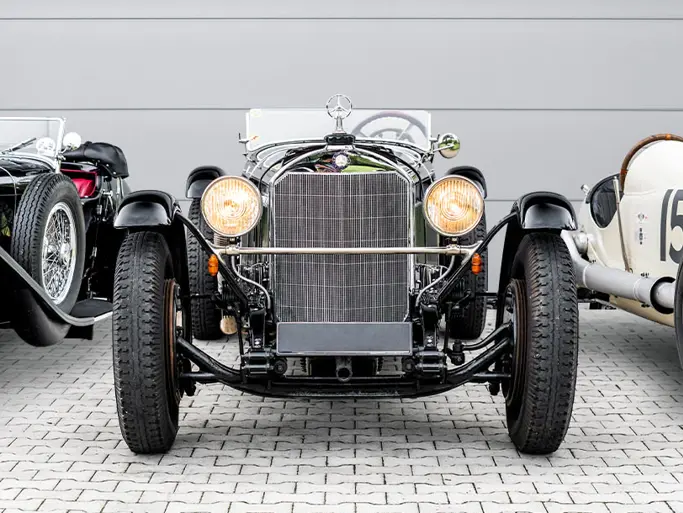Ernst Loof occupies a rather unfortunate place in motor racing history. He competed in just one Formula 1 World Championship race, and it would be all over within two metres. As such, he holds the title for shortest Formula 1 career of all time.
However, Loof has a far greater reputation—aside from racing on two wheels and four, he was a designer for BMW in the pre-war era, playing a key role in the development of the 328. More pertinently, he was the founder of Veritas, alongside Georg Meier and Lorenz Dietrich, formed in 1947.
Though the company has largely been forgotten by most, other than a short-lived revival in the 2010s thanks to a Top Gear segment, the achievements of these three dedicated visionaries at a time of extreme flux in Germany deserves cherishing.
While Germany had become the pre-eminent force in motor racing prior to World War II, the horrors of conflict had left the nation's manufacturers reeling. It was a time when recriminations saw many of the leading engineers of the pre-war era, who had been co-opted into the war effort, arrested and jailed. Ferdinand Porsche, Anton Piëch, and Ferry Porsche were all arrested by the French as war criminals and while Ferry was released after six months to set up his eponymous company, Ferdinand Porsche and Anton Piëch would spend much longer in jail and were only bailed out thanks to a contract with Piero Dusio’s Cisitalia concern for a Formula 1 car design that never came to fruition.
It wasn’t just the engineers that faced challenges—Germany was ineligible for world championships until 1951. However, Loof was a determined man—as were Lorenz Dietrich (former motorcycle racer and BMW president) and Georg Meier. Meier was famous for becoming not only the first foreign winner of the Isle of Man TT races, but also the first motorcycle racer to lap a grand prix course at more than 100 mph.
He too was an integral part of the BMW team, joining in 1937. Despite saying the road racing was too dangerous for him, and sharing his racing duties with being a sergeant-instructor for the military police, he would take the 1939 TT by nearly two minutes over Jock West on a BMW. He also drove for the Auto Union team that year, with his best finish coming at the French Grand Prix at Reims.
After the war, Meier returned to racing BMW motorcycles, but the opportunity to form his own racing team with Loof and Dietrich was difficult to resist.
However, the first Veritas wasn’t actually called a Veritas at all—it is the Großmutter or “Grandmother”. This car is for sale at our Munich sale, estimated at between €400K and €500K. Powered by a highly tuned 2.0-litre BMW 328 six-cylinder engine, it would eventually break cover at the 1947 Alsace Grand Prix with Eugène Chaboud. But upon learning that the car was German-built, the French race director ordered it to be removed from the race.
Meier himself would take the wheel in 1948, scooping the German Formula 2 Championship before Loof sold the car to Toni Ulmen in 1949. Ulmen raced the car seven times, notching up two wins on the way to 2nd place in the German 2.0-Litre Sportscar Championship, following it up with the Championship victory in modified two-seater, open-wheel form in 1951. Its racing career continued until 1952, and the car would eventually pass to 1970 Le Mans 24 Hours winner Hans Herrmann. Find out more about this car here.
After Großmutters success, Veritas-BMW (as they were then known before BMW complained), developed more prototypes. First built in a corner of the Allied-occupied BMW factory in Allach in 1947, production moved to France following American opposition to the development of any new car or engine. The trio’s deep knowledge of the BMW 328 saw this used as the basis for their dream—the 328’s six-cylinder engine nestled in a lightweight tubular frame, with a light alloy body designed by Kurt Frick. The combination proved to be highly effective for BMW-Veritas’s first customer, Karl Kling.
Kling, the first German to achieve a Formula 1 podium (2nd at the French Grand Prix in 1954), would go on to play a key role in ensuring motorsport was part of Mercedes-Benz’s future, taking victory in 1952 Carrera Panamericana with an experimental Mercedes-Benz 300 SL. However, in 1947, he proved his mettle in the Veritas, taking it to victory in its first race at Hockenheim, on the way to claiming the German 2-litre Championship.
The next step was the Veritas RS of 1949. This two-seater sports car again used the 328 as its basis, with power boosted to between 125 and 135 brake-horsepower. Twenty-two RS models would be built, competing in five World Championship Grand Prix races between 1952 and 1953. The best result came at the 1952 German Grand Prix, with Fritz Riess taking 7th spot.
Veritas got around the ban on German racing cars by selling them to foreign racing teams—the most famous of which was the French Meteor outfit. This particular car however, up for grabs for between €550,000 and €750,000, was first delivered to Belgium.
Johnny Claes is perhaps better known as a founding member of legendary racing team Équipe National Belge, but at the time he was Veritas dealer and racer. He drove this particular RS at the 1948 12 Hours of Paris, sharing driving duties with Emilie Cornet; they finished 8th. Claes later drove the car at the 1949 Grand Prix de Brussels. You can find out more about this car here.
In 1949 Veritas looked to build on the success of its racing programme with its first road car, the Komet—essentially a roadgoing RS model with little in the way of creature comforts. These were followed by the Ben Bowden-designed 2+2 Saturn coupé and Scorpion cabriolet.
The latter two cars combined the BMW 328 engine in a 2.6-metre wheelbase with fully independent front suspension, upper and lower control arms, longitudinal torsion bars, and telescopic dampers, while out back there was a De Dion axle with triangular links, longitudinal torsion bars, and telescopic dampers. The cars were novel in having 12-volt electrics, while the gearboxes were five-speed items of the company’s own design.
The dream started well, but it soon started to crumble due to a lack of funds. A contract to build the Panhard Dyna was conceived to raise money, but it overworked the production staff. In search of extra factory capacity, production moved to Muggensturm in 1949, but by this point BMW 328 engine supply had dried up as BMW steadfastly refused to get involved.
Veritas turned to Heinkel for a new 2.0-litre six-cylinder engine, but tensions within the firm had reached fever pitch. The company didn’t have the money to buy the other components for the new models, and Loof and Dietrich parted ways. Dietrich would plough on with the Panhard Dyna project, with little in the way of success. Loof, meanwhile, set up Automobilwerke Ernst Loof GmbH in 1950. Using the former Auto Union workshops at the Nürburgring, he set about building a new range of Veritas saloons and cabriolets utlising the Heinkel engine.
Though the road car programme never fully took off, the racing cars that wore the Veritas name continued to be successful well into the 1950s. In 1951 the ban on German racing cars came to an end, and the Veritas Meteor became the first German Formula 1 car, with Peter Hirt taking on the Swiss Grand Prix—though a defective fuel pump curtailed his race before it actually started.
Designed by Ernst Loof in 1949, the Veritas Meteor was built around a BMW 328-inspired Heinkel engine further developed by former BMW employees Karl Schäfer, Karl Rech, and Max Knoch. Meteors would race until 1953, and in 1954 German driver Hans Klenk entered a modified version into the German Grand Prix for Theo Helfrich to drive.
This particular car, chassis 502, was sold to Belgian racer François Vermeulen. He then loaned it to famed pre-war racer Legat of Chimay. Known for his back-to-back victories in the 1931 and 1932 Grands Prix des Frontières, at the grand age of 53 he tackled five Formula 1 races between 1951 and 1954. You can find out more about this car here.
For Ernst Loof, the Veritas project would come to a halt in 1952 after an abortive attempt to sell both Opel and Ford-engined Veritas models. The company went bankrupt, and in a fitting twist of fate its assets were acquired by BMW in 1953. Loof returned to BMW too, working in the styling and body engineering department. However, there was one last thing that he needed to do—yes, that fateful German Grand Prix of 1953, driving the Veritas RS of his own design.
Sadly, a fuel pump failure caused his exit after just two metres, and just three years later he passed away from a brain tumour. Loof’s top-flight race result may make for an amusing side note in the annals of Formula 1 history, but Loof deserves far more credit. Between 1948 and 1953, a total of 13 German championship titles were won with Veritas racing and sports cars, with 71 class victories at circuit and mountain races in Germany, plus numerous class victories across the continent.
As such, he and the other founders of Veritas played a crucial role in kick-starting Germany’s post-war racing efforts, setting the scene for the rapid development of German manufacturers through the 1950s and beyond.







